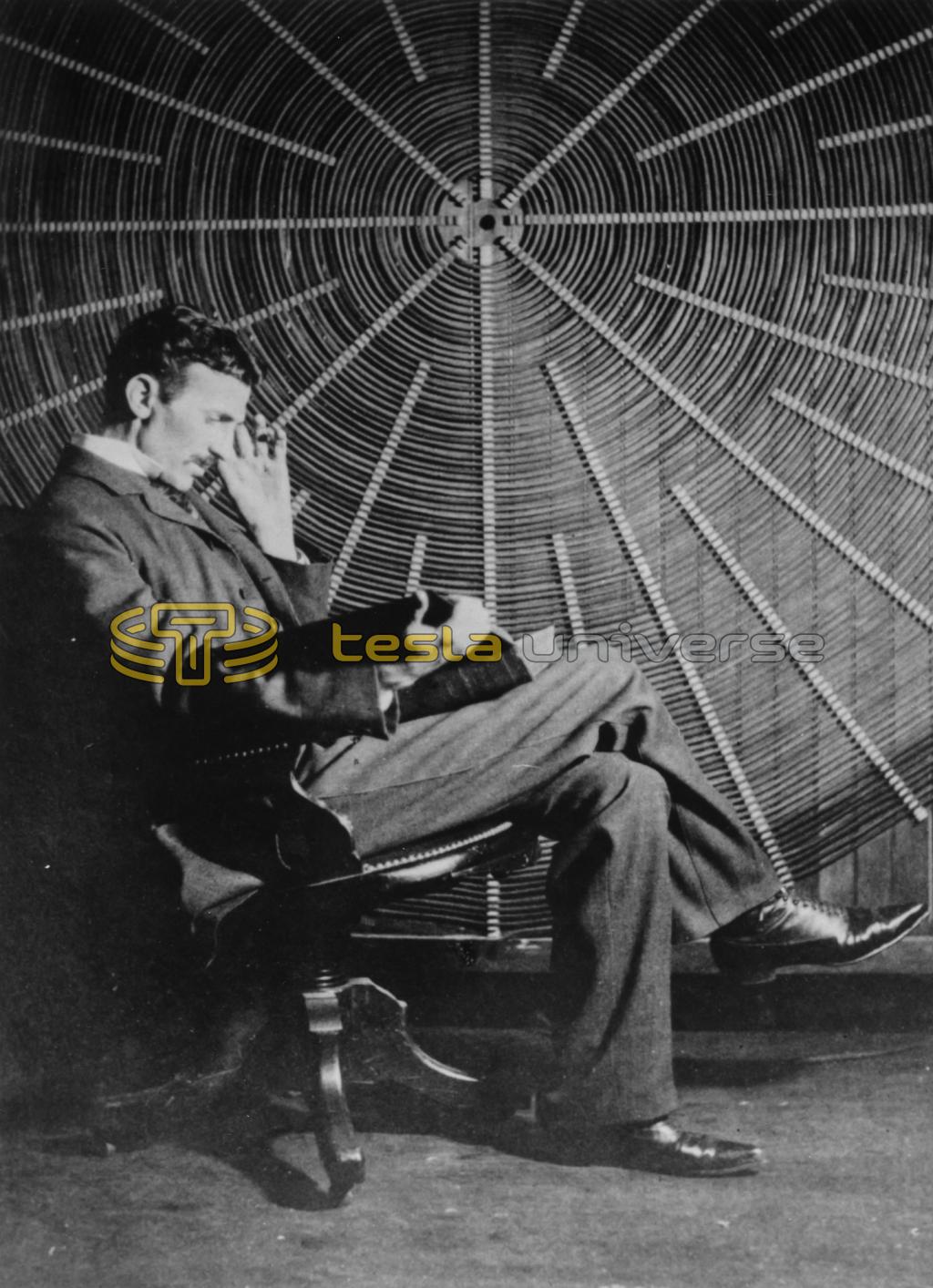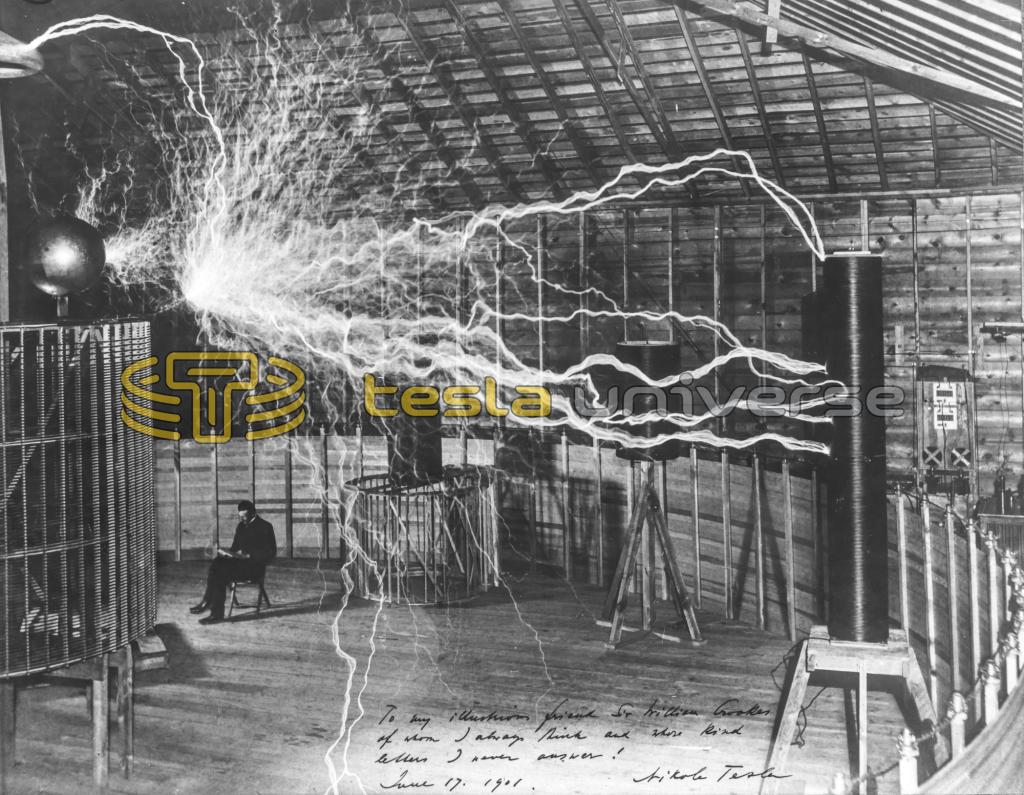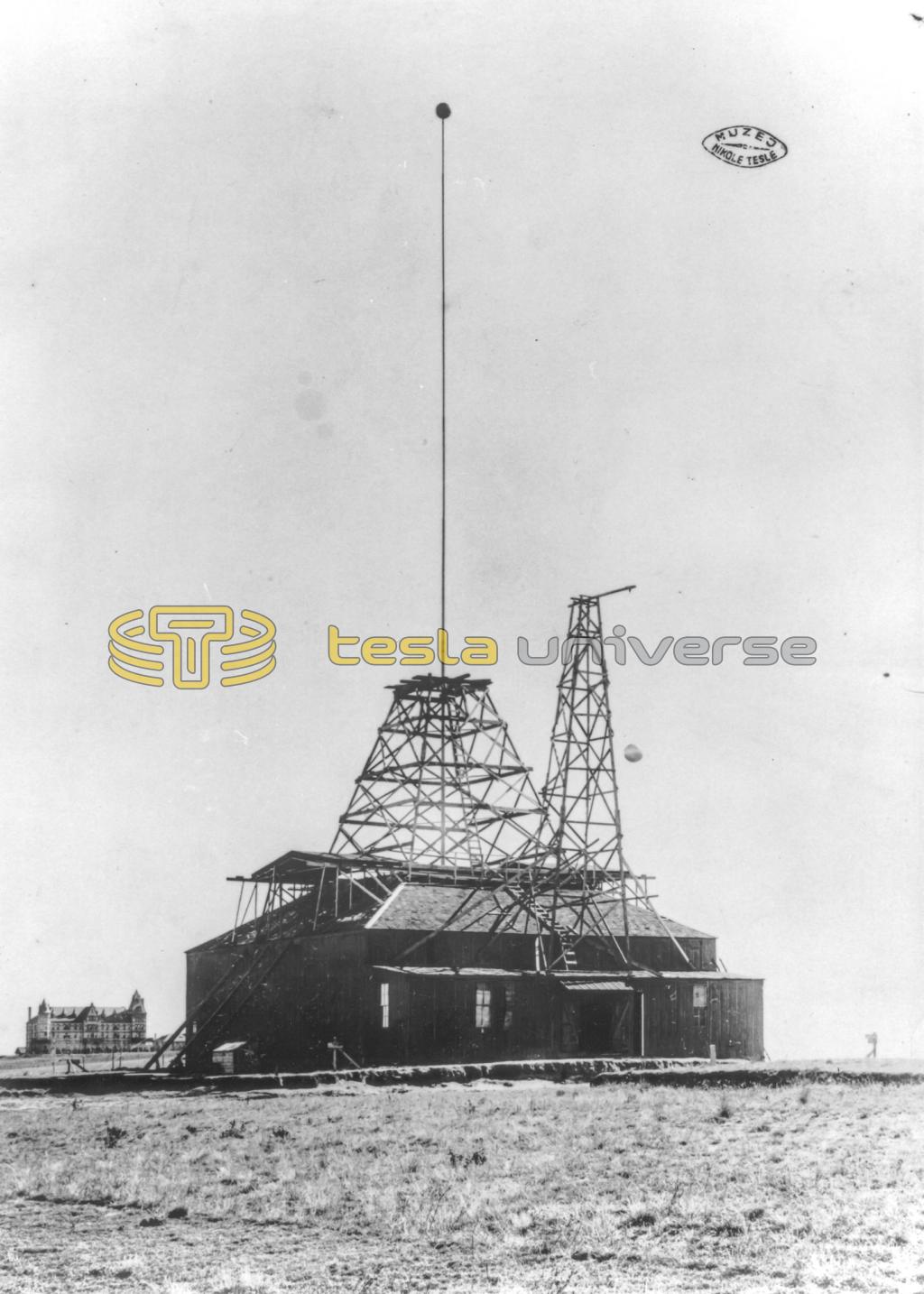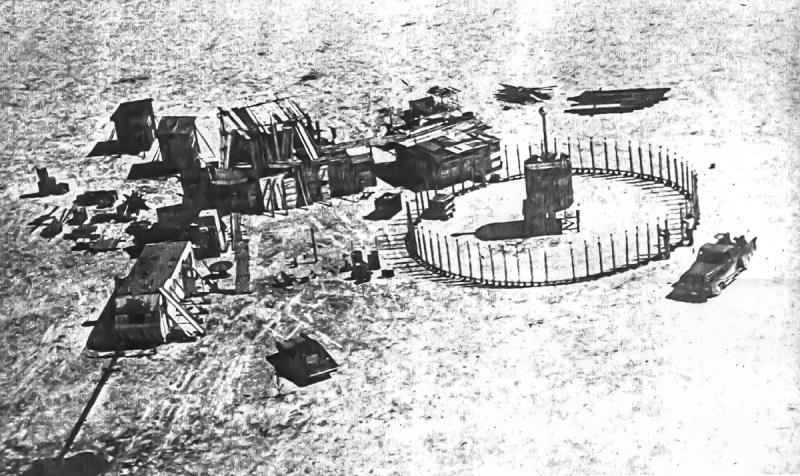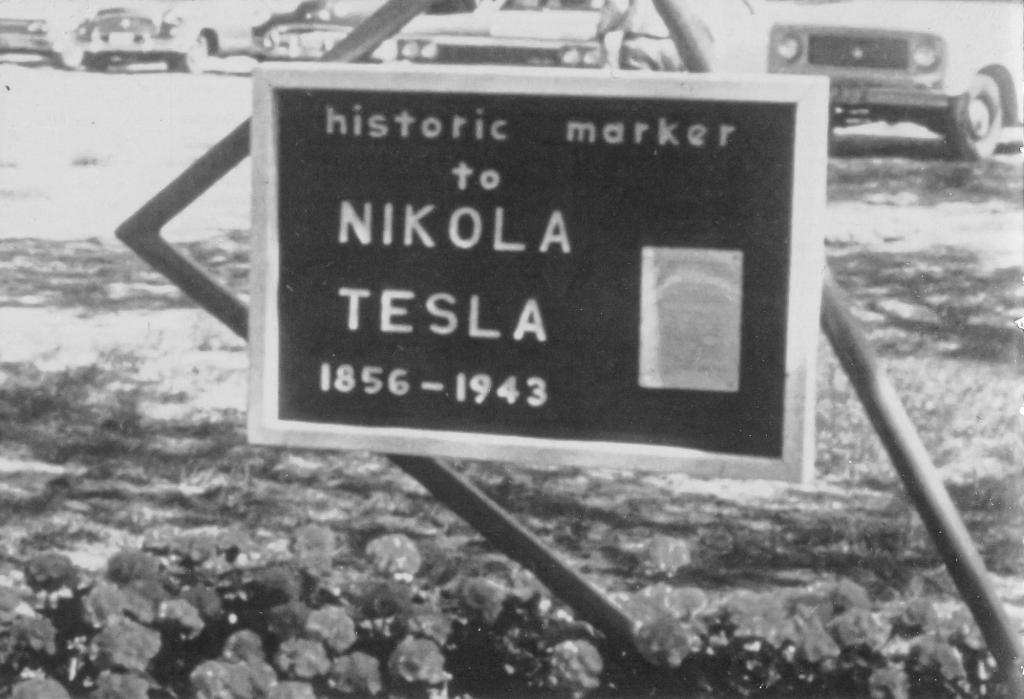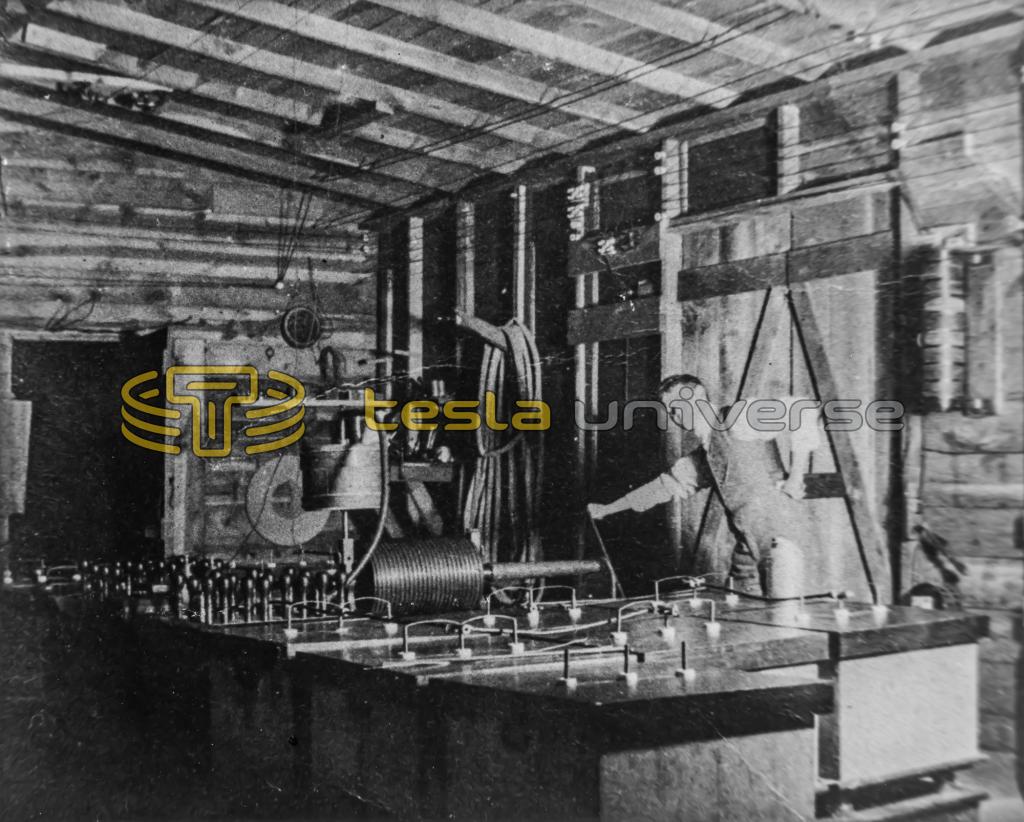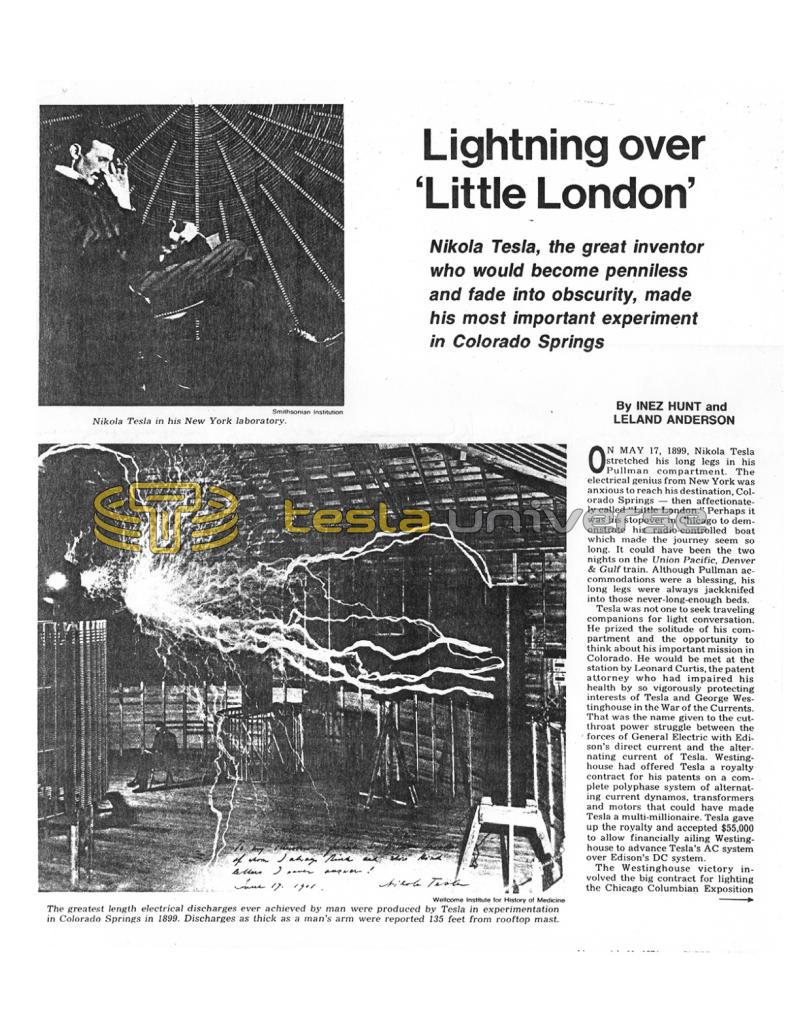
Nikola Tesla Articles
Lightning over 'Little London'
Nikola Tesla, the great inventor who would become penniless and fade into obscurity, made his most important experiment in Colorado Springs
On May 17, 1899, Nikola Tesla stretched his long legs in his Pullman compartment. The electrical genius from New York was anxious to reach his destination, Colorado Springs then affectionately called "Little London." Perhaps it was his stopover in Chicago to demonstrate his radio-controlled boat which made the journey seem so long. It could have been the two nights on the Union Pacific, Denver & Gulf train. Although Pullman accommodations were a blessing, his long legs were always jackknifed into those never-long-enough beds.
Tesla was not one to seek traveling companions for light conversation. He prized the solitude of his compartment and the opportunity to think about his important mission in Colorado. He would be met at the station by Leonard Curtis, the patent attorney who had impaired his health by so vigorously protecting interests of Tesla and George Westinghouse in the War of the Currents. That was the name given to the cut-throat power struggle between the forces of General Electric with Edison's direct current and the alternating current of Tesla. Westinghouse had offered Tesla a royalty contract for his patents on a complete polyphase system of alternating current dynamos, transformers and motors that could have made Tesla a multi-millionaire. Tesla gave up the royalty and accepted $55,000 to allow financially ailing Westinghouse to advance Tesla's AC system over Edison's DC system.
The Westinghouse victory involved the big contract for lighting the Chicago Columbian Exposition in 1893 plus the ensuing contract for the first Niagara Power installation. The generators bore Tesla's name. and patent numbers.
Tesla recalled the unbelievable sequence of ventures since he had come to America from France in 1884. He was born in Smiljan, Austria-Hungary (now Yugoslavia.) He had been employed by Edison for a short time, but the two were not compatible in viewpoint, educational background or personality. Separation was inevitable.
Tesla recalled his first laboratory made possible by the sale of his patent rights. To work alone was a relief. He was a dreamer with the imagination of a poet, disciplined by the precision required of an engineer. He intuitively sensed and discovered scientific principles. His experiments only proved his discoveries to the world.
He had made early experiments in roentgen rays which he termed "shadow graphs." He experimented with new types of electrical lighting. The principles and destructive powers of resonance fascinated him.
Tesla remembered the acclaim. which had been given him as a lecturer to the great scientists of Europe and America. He was proud of the more than a score of degrees and honors accorded him by universities and scientific societies, but he soon realized that he could not. spread himself so thin. His place was in the laboratory.
His dedication to his work was so demanding that he had time for only a few friends. Among them were John Muir, Paderewski, Mark Twain, the esteemed author-poet Robert Underwood Johnson, the Spanish-American war hero Richmond Hobson, J. Pierpont Morgan. and Cornelius Vanderbilt.
Tesla noted the train was nearing the Rockies. He prized his citizenship papers which he received in 1891 - the same year he perfected his famous Tesla coil, the principle of which was included in many electrical developments.
He had written to Leonard Curtis. explaining his need for space. His experiment was to be too dangerous to do in crowded New York City. "My coils are producing 4,000,000 volts-sparks jumping from walls to ceilings are a fire hazard. This is a secret test," he had written. "I must have electrical power, water and my own laboratory. I will need a good carpenter who will follow instructions. I am being financed for this by Astor, and also Crawford and Simpson. My work will be done late at night when the power load will be least."
Curtis had replied: "All things arranged, land will be free. You will live at the Alta Vista Hotel. I have interest in the City Power Plant so electricity is free to you."
Tesla stepped from the train, breathed crisp mountain air and was greeted by Curtis. They went by carriage to the El Paso Club for lunch before going to the Alta Vista.
Later, at the hotel, he was surrounded by a swarm of reporters.
"Mr. Tesla," asked one, "can you tell us why you are here and what you intend to do and when?"
Tesla answered that he intended to study lightning at high altitude and expected to do wireless experiments.
"Do you intend to send messages from peak to peak?" was another query.
"I am not here to do stunts," was Tesla's answer. "I have serious work here. If you will excuse me I must rest now."
Mrs. Stevens, wife of the hotel owner, placed the keys into his hand, explaining, "These are for room 207 as you ordered. The boy will bring your baggage. You may ride with him on the elevator."
"Thank you," Tesla replied, "I prefer to climb the stairs." He did not explain that although he was not afraid of a million volts of electricity, he drew the line at some elevators.
Mrs. Stevens accompanied him to the check room.
"I shall ask you to furnish 18 clean towels each day in my room," Tesla said.
Mrs. Stevens made note of the request.
"In the dining room," continued Tesla, "I prefer a secluded table and would like a dozen clean napkins with each meal."
Mrs. Stevens agreed, wondering at the unusual requests. She did not know that after a serious illness in Tesla's childhood, he had been plagued by many superstitions, phobias and compulsions. For instance, he had chosen room No. 207 because it was divisible by three. If he walked around the block once, he would probably walk around three times. His germ phobia caused him to rub each piece of silver vigorously with the extra napkins on the table. He washed his hands for no reason. His clothing was immaculate. Gloves were seldom worn more than one time before cleaning or throwing away. A handkerchief was used once and discarded.
Tesla did not like to see a woman wear earrings or pearls, which he felt took on a mystic change when worn against a woman's flesh.
Because his father was an Eastern Orthodox priest, he was interested in biblical miracles. He felt that Moses was a practical and skillful electrician far in advance of his time. Tesla. remarked that the Bible describes precisely and minutely arrangements constituting a machine in which electricity was generated by friction of air against silk curtains and stored in a box constructed like condenser.
Mrs. Stevens also would soon learn that he preferred to pay all bills on the 13th of the month. And, when he made an important electrical discovery or lecture, he would dress in white tie and tails, in deference to the guiding force in his life.
On the morning after his arrival, Tesla consulted Joseph Dozier, a recommended carpenter, and showed him laboratory drawings. They chose a high spot on the prairie about a mile east of the post office and directly back of the Colorado School for the Deaf and Blind. Another mile to the southeast stood the Union Printers Home. There were no houses between.
Tesla hurried back to the hotel to write his New York laboratory: "Send Lowenstein to me immediately. He must be here to oversee construction and locate equipment."
On May 28 Curtis insisted on being host for a dinner at the El Paso Club to introduce Tesla to Colorado Springs. Gov. Charles S. Thomas accepted his invitation. Tesla charmed his audience and proved to be well versed in literature past and present. He even discussed some of his plans. Although he would have enjoyed their company often, he reminded himself that time in Colorado Springs was precious and short.
Shipments began to arrive from the New York laboratory, including very large gauge cable. Necks had been ground from hundreds of bottles and clockworks prepared for shipment. Lowenstein seemed to work on the heels of Dozier as the laboratory was completed and equipment installed. Danger signs. went up on every corner of the property to warn trespassers that the laboratory housed apparatus. that could kill 30,000 to 100,000 in an instant. A familiar quotation from Dante's Inferno was placed over the laboratory door: "Lasciate ogni speranza voi ch'entrate" (Abandon hope all ye who enter here).
It was crisp fall weather when Kolman Czito, a trusted employe, arrived to man the apparatus in the important experiment. Czito knew that Tesla had an uncanny intimacy with physical phenomena and electro-mechanical apparatus. He hoped Tesla sensed what might happen when the switch was thrown.
Only Tesla knew the magnitude of the moment. Soon he would prove that wireless power transmission could be made possible so that it could be received on any part of the globe, economically and safely. Messages and power could be delivered. to the common man or the industrial giants at minimal cost. It could revolutionize the world! The station crew were glad to take the night off!
The time for action came. Tesla. attired himself in a Prince Albert. coat and a black derby hat. There was a dry-run of instructions to Czito for procedure at the switch. Everything checked. He gave the The Denver Post July 11, 1976 . 23 signal to start the test: "NOW!"
Tesla stepped outside to watch. Through the open door he could see inside the laboratory. The whole room bristled with sparks. Soon a thunderous crescendo could be heard. The smell of ozone permeated the air. Looking at the mast atop the building, discharges reaching 135 feet and as thick as a man's arm darted from the mast. A continuous stream of sparks could be seen passing through the grains of sand when walking considerable distances from the laboratory. Filaments of light bulbs fused and moths were whirled around within the circle of the transmitter as if caught in a gale. The roar of the discharges could be heard in Cripple Creek 15 miles. away. Tesla had produced the longest point-to-point electrical discharges ever achieved.
Tesla believed that he had caused the whole earth to resonate with his magnifying transmitter. He explained: "Imagine a bath tub partly filled with water. By rhythmically moving one's hand back and forth, it is soon possible to cause the water wave to splash over the rim, In similar fashion I have caused the earth's static charge to oscillate with my transmitter."
Tesla was jubilant with his success. Suddenly the roar ceased. "Czito," he cried, "I am not ready for you to cut off the power!"
"I didn't," cried Czito. "There is no power." A generator was burning in the City Power Plant.
Tesla made other valuable experiments in Colorado. He made an unexpected discovery of the method of producing ball lightning. "I never saw fireballs," he said, "but as a compensation for my disappointment I succeeded in determining the mode of their formation and producing them artificially."
At first, Tesla produced ball lightning quite by accident, and saw them. destroy the laboratory's tall mast and some of the apparatus within. He observed that the destructive action accompanying the disintegration of a fireball takes place with inconceivable violence.
Tesla returned to New York in January 1900. He was broke but confident that he had performed the most important experiment of his life.
He was not worried about money. He had lived in a period of wild spending, and financiers had been eager to invest. But he found the financial world had changed and investors were holding tight to their money. Few people could understand what Tesla had done in Colorado or wanted to do for the world.
J. P. Morgan was the only one willing to lend him a hand. The banker advanced Tesla $150,000 to build a gargantuan tower on Long Island for a multiplex trans-Atlantic broadcasting system. The terms of the loan were equal to the proverbial "pound of flesh." For collateral, Tesla had to assign 51 per cent of all his patent rights relating to wireless telegraphy and telephony plus any other patents which might emerge from the Colorado Springs test.
Soon, financial panic and Morgan's refusal to advance additional funds dealt Tesla a blow from which he could never recover. Tesla had underestimated the cost and now could not complete equipment he needed to prove his theories. Unfortunately, his talents did not include money management.
Tesla continued to dream and make grandiose mental blueprints, but they were only paper tigers with insufficient funds to promote. Reporters continued to interview Tesla about a rumored death ray he was planning but he was fast becoming forgotten.
When he died at 86 in New York. City, three Nobel Prize winning scientists proclaimed Tesla's death as "the loss of one of the great intellects of the world, who paved the way to many technical developments of modern times."
It is 77 years since Tesla's experiments in Colorado Springs. Information about his work has been slow to emerge. We know he solidified his ideas concerning wireless transmission of power.
He made other discoveries. One lonely night he received a series of counting codes on his sensitive instruments which he believed were of extraterrestrial origin. He was certain he had received a signal from another planet! The report of planetary communication was difficult to comprehend at the turn of the century. Tesla was ridiculed for such brash and unsupported claims. Taken aback by attacks on his credibility Tesla said little more about receiving these signals, but in the 1920s similar counting codes were picked up by other investigators. Inspired by the prospects of extraterrestrial communication, Project Ozma at the National Radio Astronomy Observatory in Green Bank, W. Va., has had antennas turned toward the heavens since 1960 "listening" for other signals.
Today, at Wendover Air Force Base in Utah, Tesla's magnifying transmitter has been reconstructed for the purpose of ball lightning research. Robert Golka, director of Project Tesla, says: "Tesla mentioned little in his diary concerning details of his apparatus-kept it all in his head. Consequently, it has been difficult duplicating his experiments." Tesla feared piracy of his ideas.
Dr. James Wait, director of the Environmental Research Laboratories of NOAA in Boulder, Colo., and one of the world's leading authorities on electromagnetic propagation, has commented that Tesla's experiments in Colorado Springs "predate all other electromagnetic research in Colorado his early experiments have an intriguing similarity with later developments ELF (extra-low frequency) communications." Tesla's magnifying transmitter was the first in the world with sufficient power to excite ELF resonance in the earth-ionosphere waveguide.
In Colorado Springs on May 23, 1966, a memorial dinner was held in the same room of the El Paso Club where Leonard Curtis, the elite of the city and the governor of Colorado dined with Tesla in 1899.
Earlier in the day, a group from the Historical Society of the Pikes Peak Region, members of the Institute of Electrical and Electronics Engineers, young scientists with their homemade Tesla coils, a speaker from Westinghouse corporation and the governor's representative dedicated a simple wooden marker to show where once the magic of a man-made lightning storm, revealed the figure of a tall man, in white tie and tails, searching the dark unknown for the secrets of the universe.
Leland Anderson is a Denver resident; Inez Hunt lives in Manitou Springs, Colo.
